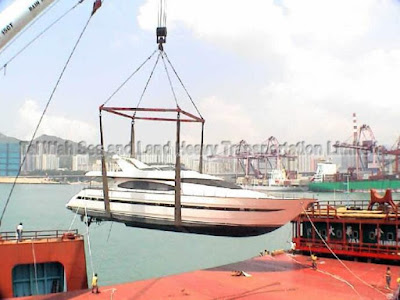FCL vs. LCL – Which One is More Suitable for Your Business?
If you are uncertain about whether LCL or FCL shipments are more suitable for your business, here is a review of definitions and procedures for both shipping methods, to help you determine the right decision.
LET’S START WITH FULL CONTAINER LOAD (FCL.)
Just like it sounds, FCL is a type of ocean freight, and refers to Full Container Load, which means that you are the only user of the container, and do not need to fill the entire container.
NEXT IS LESS CONTAINER LOAD (LCL.)
The LCL type of ocean freight are shipments priced based on the volume of cargo. These are smaller volume cargoes, which belong to several shippers, combined and tacked inside a single container. The important point with LCL is to plan wisely, and maximize available space if you are considering the LCL option.
WHEN AND WHY SHOULD YOU CONSIDER FCL?
If you have regular shipments, and are planning to transport more than 15 cubic meters, FCL would be the most economical type of ocean freight. Filling a full container would help your business take advantage of the economies of scale, because filling, or nearly filling, a container means shipping more goods with fewer containers.
In addition to the economies of scale advantage, FCL offers a faster transit time compared to LCL shipment, due to the additional handling time required at origin and at destination. Also, cargo could get delivered to its final destination faster than LCL. When an FCL arrives in the port of discharge, it could be picked up from the terminal, and delivered to the importer’s facility, as soon as the container is unloaded from the vessel. It takes more time for LCL. It requires additional procedures, and each step may result in the potential for delays.
WHEN AND WHY SHOULD YOU CONSIDER LCL?
You should decide whether FCL or LCL is the best option based on the volume of the cargo you are shipping. You should start with calculating the cubic meters (cbm) of your cargo. This can be calculated by measuring the width, height, and length of your cargo in centimeters, and divide by 6000 to get the volume in kilograms. A standard 20’ container can approximately hold 28 cbm. So, if your cargo is 13 cbm or less, it would be better to consider shipping it LCL.
Here are some other reasons to consider LCL:
You are only paying for what you ship, and it is a cheaper way to import smaller volume cargo.
If you are the importer, LCL can help you keep your inventory in lower quantities by purchasing a smaller amount from suppliers.
LCL helps you deliver goods easier: Most of the warehouses at final destination require delivery appointments, and since the free time is limited at the terminals, delivering FCL shipments could be challenging before you start paying extra charges such as demurrage & per diem, until the empty container is returned back to the terminal. However, with a LCL shipment, you will have more flexibility with time.
Aside from all these benefits, some of the possible disadvantages should also be considered. These include potential delays at origin, while grouping the cargo together to fill the container, and delays at destination while unloading and separating the cargo in warehouses.
Source:https://www.morethanshipping.com/fcl-vs-lcl-one-suitable-business/


Comments
Post a Comment